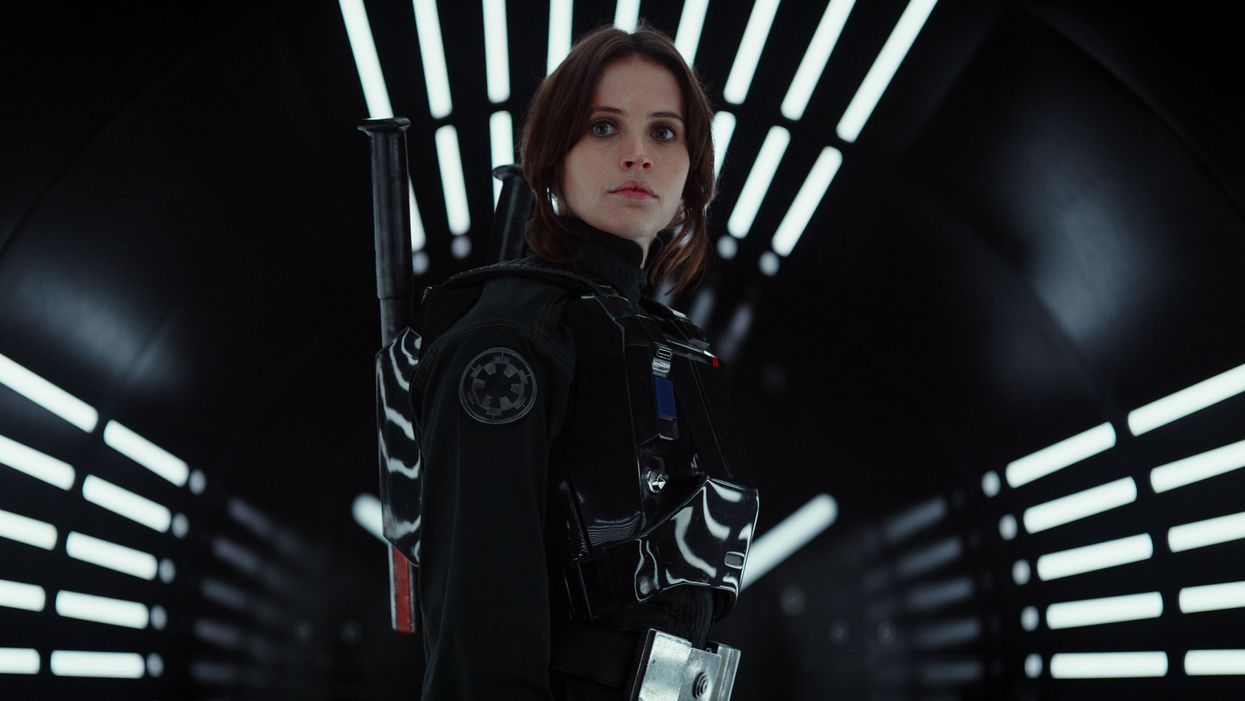From Herzog to ‘Star Wars’: The Amazing History of an Industry-Changing LED
Digital Sputnik Co-founder Kaspar Kallas shares the incredible story behind the Voyager LED.

[Editor’s Note: Kaspar Kallas wrote this first person history of Digital Sputnik, with editing by NFS staff.]
My brother Kaur and I founded Digital Sputnik in 2007 as a post-production company, but I have lost the exact beginning of the company. I don't even remember where I got the name from. We had recently bought an SI2K camera system and provided camera rental with finishing services to Estonian/British co-production Magnus, directed by Kadri Kõusaar, which premiered at the Cannes film festival that same year. From that point on, I knew we needed to do things differently.
It was imperative to own a camera and play with the footage to find workflows through numerous mistakes.
We learned by getting things done, and it was imperative to own a camera and play with the footage to find pleasing aesthetics and workflows through numerous mistakes. The advent of digital cinema was yet to come: Peter Jackson shot Crossing the Line in 2008 with one of the first RED cameras,and Anthony Dod Mantle won the Oscar for Best Cinematography for mostly-SI2K-shot Slumdog Millionaire in 2009.
Developing the Workflow
In the next few years, we developed a workflow: A single person works on set as the second camera assistant (today more commonly known as DIT and/or data wrangler) and finishes the film by providing visual effects, color-grade, and mastering.
This sort of arrangement helped cinematographers move into the digital era by building trust. When working with the cinematographer, I would be helping out with quirks of digital technology on set and also be there for the final approval screening to ensure that all of the agreed-upon color decisions were carried out.
Our big break came when DP Peter Zeitlinger and Director Werner Herzog decided to embrace our workflow.
The breakthrough in our workflow came in 2011 after meeting DP Peter Zeitlinger, with whom I worked on 3D epic Cave of Forgotten Dreams by Werner Herzog. The shoot was an utterly memorable experience if only for the location. Both Werner and Peter decided to take a risk on us and embrace the Digital Sputnik process.

Cave was set to premiere at Toronto, making the schedule tight enough, and to make matters even tighter, I was already booked on another film at the time in Argentina that I could not walk out of. I was not going to say no to Werner, and so I ended up working two shifts in Argentina: the second AC on set, and an extra six night hours on the post for Werner’s film.
The Argentinian film was El Premio by director Paula Markovitch and shot by Polish DP Wojciech Staroń, which screened side by side with Cave of Forgotten Dreams in Berlin in 2012, where it won the Silver Bear for outstanding cinematography.
Turned on to Lighting
While working more and more on digital and film footage, my frustration about HMI lighting and skin tone representation silently grew. At the time, digital filmmaking was still the Wild West, and most of the equipment was a cumbersome and unbalanced mess of cables that only a very imaginative cinematographer would call a camera.
At this point we knew two things: digital was going to be more affordable, with a much shorter equipment life span, and it was going to be far more accessible to a wider audience than film ever was. Everybody was hard at work building a digital camera revolution. For us, the obsession became digitally controlled lighting, since image is nothing but recorded light.

The Digital Sputnik System
The DS system is designed to work like Lego bricks, a relatively small number of them will give you versatility that never existed before. The possibility of connecting light modules to build any desired shape of light was something new.
The system became an almost ideal replacement for HMI fixtures on set. In the coming years, the system would go on to be used as primary lighting on some major feature films: Independence Day: Resurgence, Star Wars: Rogue One, Ghost in the Shell, Pacific Rim 2, and many others. We built an entire workflow around the current DMX infrastructure and tried to make it more accessible to a wider audience by providing simpler controls, ten-channel footprint DMX personalities and automatic addressing within one stack plus a free iPhone app to control it all.
All the above were baby steps in the huge cinema industry, with every single one an invaluable lesson. By 2016, we had collected enough costly experience and started working on the new line of products to complement the DS series: the Voyager.
The Voyager Line
The Voyager line is designed from the ground up with complete set management in mind and should be operable by a single person. The principal value of the RGB controlled fixture is a What-You-See-Is-What-You-Get workflow. By generating looks during camera tests and using a LUT box on the monitor or the camera, it is possible to fine-tune the look while on the set. We call this new software LightGrading. The workflow opts for an easy interface (suitable for cinematographer to use without an assistant) and an intuitive way to select the lights to control.
With the Voyager, the setup procedure of any size of a set is painless. The system is auto-addressing with a simple "touch and select" interface through a phone or tablet camera. When a rigger is building a set, it will always work with the controller, and there is no need to make manual tables and address every fixture. You will never again plug the DMX cable into a wrong universe port and not know why the fixture is not working as expected.

Complete On-Set Management
When the set is ready, use LightGrading software to make pictures of all the lights on the set (more than one light can be on a single image). Select the color and continue to paint on the pictures with your finger to get the results you want. Every painted finger stroke is recorded with position, timing, and direction. The extra data is used for animation. The animation is recorded into the fixture and will continue to work even if the controller is disconnected.
Every fixture has the animation engine built-in to ensure an extra level of security about network failures or controller crashes. The LightGrading application will automatically find all the available fixtures and load associated animations and pictures. When the user makes adjustments or animations, the data is synced to fixtures. In the case of poor network connection, the last state is maintained.
The animation engine comes with a plugin API, making custom effects in the LightGrading software possible. Even when the Voyager’s default protocol is Lightgrading, it is still possible to use DMX, ArtNet, sACN, and OSC inputs for animation parameters so that it can be used as a native device on any of the aforementioned networks.
We produced the mini film above with our tools to demonstrate what could be achieved with a minimal crew and DS employees. The entire Voyager introduction clip is shot with DS fixtures and LightGrading alpha software.
Digital Sputnik’s Capabilities
Here are some more BTS clips that show the capabilities of the Voyagers. In the following clip, DP Markus Föerderer, who shot Roland Emmerich’s Independence Day: Resurgence shares his first emotions of working with new Digital Sputnik tools.
The Mermaid sequence was shot with an 8K RED Weapon in Gates underwater housing using Hawk Vantage classic '74 lenses. It is a simple demonstration of the Voyager underwater capabilities.
Laila Pakalnina is a director who got me started in the film industry. I have learned a lot from her. To have her work in Hollywood with Markus Förderer is combining the best of both worlds—European Art House and Hollywood skill.
At Digital Sputnik, we create hardware and software that optimizes the whole production process and creates efficiencies that raise the quality and speed up content creation. We build tools that we ourselves would like to work with. All new features that seem ideal in the lab might not be ideal in the real world, and that is why we test all of our gear under the eyes of a professional gaffer so we can build equipment with practical workflow. We will continue to improve our products and work on new exciting tools.
I hope you like—and perhaps share—our slightly twisted view of the film industry.
Pre-order the Digital Sputnik Voyager on IndieGoGo through August 10, 2017.











